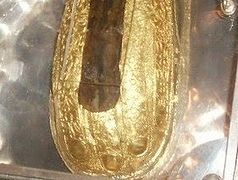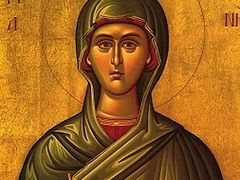“O Protectress of our souls from the deception of Satan…”
“O our fervent mediatress before Christ in all sorrow!...”
(From the akathist to the Holy-Equal-to-the-Apostles Mary Magdalene)
On July 22/August 4, the Orthodox Church celebrates the memory of the Holy Equal-to-the-Apostles Mary Magdalene. Little is known about this historic figure. The Holy Scripture tells us nothing about the formative years of this saint, but Holy Tradition informs us that the future follower of Christ was young, beautiful and led a sinful life. In connection wth this, many people today wrongly identify the Gospel persona of the Myrrh-bearer with the image of the harlot who was about to be stoned or with the promiscuous woman who wiped the most pure feet of Christ with her hair. In actual fact, the New Testament only says that the young woman was possessed by unclean spirits, and the Lord had cast seven demons out of her (Mark 16:9).
The Lord healed many people, but not everyone was vouchsafed to follow Him. Thus, according to the Evangelist Mark, He prevented the demon-possessed man of the Gadarenes from following Him. But Mary distinguished herself for her apostolic preaching following the Savior's death, walked with her Master throughout the days of His life after her miraculous healing, and ministered unto the Lord, like other women, of her substance (Luke 8:1–3).
Commenting about this verse from the Holy Scripture, the Holy Hierarch St. Dimitry of Rostov says: “among... grateful women, the Evangelist Luke names Mary Magdalene first, because she was the first to set an example of such grateful ministry to the cause of the God-Man, or she was superior to the rest of them by her zeal in this holy cause." Gratitude for Christ was so great in this woman's heart that Mary didn’t abandon her Redeemer even when, humiliated and crucified, He was abandoned on Calvary by the majority of His disciples. The holy woman displayed her ardent love for the Savior even after His death. She accompanied the transfer of the body of Christ by Joseph of Arimathea and Nicodemus from the cross to the tomb; she was present at His burial and watched when they laid the Lord in the tomb (Matt. 27:61; Mk. 15:47). Mary Magdalene the Equal-to-the-Apostles is especially honored as a Myrrh-bearer. The Evangelist Mark writes that the women who brought fragrant spices came to the tomb at dawn, or “very early in the morning.” As if corroborating this, the Holy Apostle John the Theologian adds that Mary came to the tomb so early that it was still dark. Longing for the night to end and unable to wait for dawn any longer, when total darkness still enveloped everything around, she ran to the place where the body of Jesus was laid.
Here, inside the tomb, Mary is vouchsafed to behold not only the angels, the messengers of the resurrection, but also the Lord Himself, Who appears to her as the first among men. The young woman did not recognize the Savior, because “the distress of sorrowful thoughts and abundant tears prevented her from seeing Him, standing behind her.” Thinking that she was talking to the gardener, the woman said: Sir, if thou have borne him hence, tell me where thou hast laid him, and I will take him away (Jn. 20:15). As the hagiographer noted, “in her immense love for the Lord, Mary completely forgets her weakness and hopes to take and carry away the body of her Savior herself.” A moment later, Christ calls out the holy woman. Awe-stricken, she rushes to embrace His feet. Coming back to her senses, Mary hastens to the Divine disciples to fulfill the will of Him Who sent her to spread the good news. One more time, she enters the house where the apostles still linger around in distress and announces to them the joyful news: “I have seen the Lord!” These words became the first preaching about the Resurrection of Christ in the world.
Later, Mary Magdalene did not abandon the work of salvific evangelization. Thus, the Holy Apostle Luke in the Book of Acts writes that all the apostles unanimously remained in prayer along with some women, Mary, the Mother of Jesus, and His brothers. According to Holy Tradition, after the apostles had gone out to preach into all the world, the holy woman, the disciple of the Lord, went with them. As she traveled to Rome to preach to the pagans there, she repeatedly proclaimed in every place: “I have seen the Lord!” and witnessed to Christ throughout Italy.
The significance of the holy woman’s preaching was witnessed by the Holy Apostle Paul himself in his characteristic greeting of St. Mary as part of his Epistle from the Greek trading city of Corinth to the Christians who were in Rome then (Rom. 16:6).
According to Tradition, upon reaching old age, St. Mary moved from Rome to Ephesus, where she assisted the Holy Apostle John the Theologian in spreading the Gospel.
It is fitting for us to remember this holy follower and disciple of Christ not only during the week of the Myrrh-bearing Women, but also whenever we say, “Christ is Risen!” These are the very words the Holy Equal-to-the-Apostles Mary Magdalene said to the Emperor Tiberius when she handed him the red egg.
Through the prayers of the Holy Equal-to-the-Apostles St. Mary Magdalene, may the Lord grant us to have a grateful heart that will burn with love and faith for Our Savior Jesus Christ.




